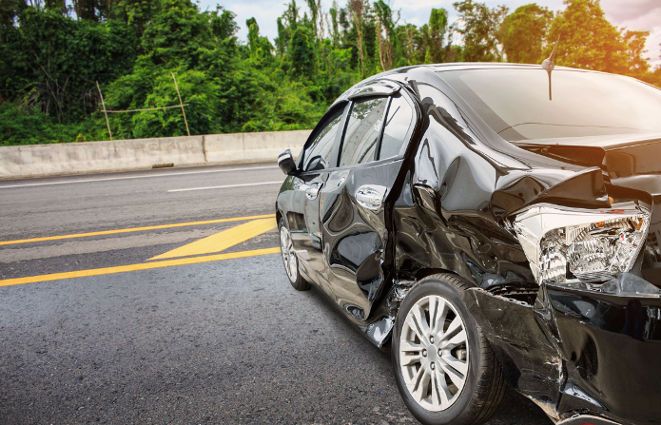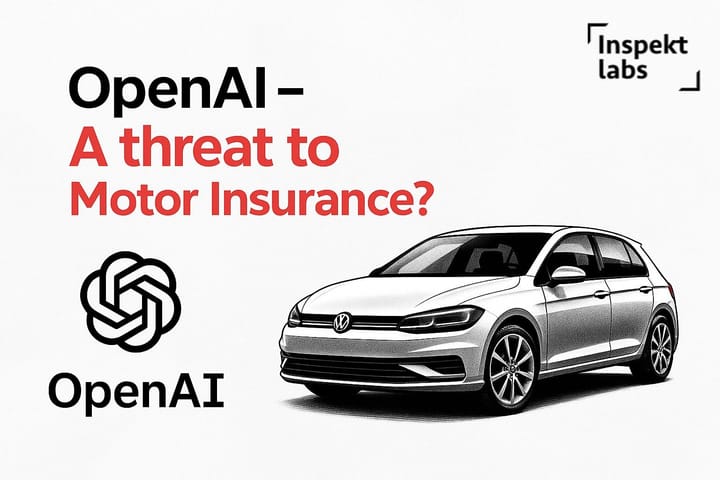Detecting Fraud In The Automotive Industry Through AI Inspections | Inspektlabs
The latest technology, such as artificial intelligence-based damage inspection and computer vision, is helping the industry face this issue head-on.

This post will discuss the prevalence of fraud in the automotive industry and what are the measures that can help address these issues. First, we will build a fundamental understanding of how fraud can occur in the automotive industry. We will look at the various stakeholders affected by fraud and those commonly responsible for committing fraud.
Then, we will look at how companies like Inspektlabs tackle fraud in the industry. Before concluding, we will dive deeply into the current technology's fraud detection capabilities and their benefits.
Introduction
There is little doubt that fraud is prevalent in the automotive sector. There are many ways through which individuals or companies may commit fraud when it comes to dealing with cars.
Perhaps the most affected section facing fraud cases is automotive insurance. However, auto fraud can also have a wider ambit and is not always limited to insurance matters. Fraud can also occur in the used car and car rental/leasing sectors.
However, companies and individuals are becoming wiser to fraud in recent years. The latest technology, such as artificial intelligence-based damage inspection and computer vision, is helping the industry face this issue head-on.
Let us explore the implications of fraud in the automotive industry and the measures that can be undertaken to detect and flag instances of fraud in such cases.
The Prevalence of Fraud in the Automotive Industry

What Does Fraud Entail In The Automotive Industry?
A purposeful misrepresentation committed by or against an insurance business or agent is known as insurance fraud. Applicants, third-party claimants, policyholders, or professionals who provide services to claimants may commit auto insurance fraud at various times.
Inflating claims, lying on an insurance application, filing claims for injuries that never happened, and staging incidents/accidents are all common fraud. Insurance brokers and corporate personnel may also commit insurance fraud. Regardless of the fault in a car accident, no-fault auto insurance allows policyholders to recoup financial damages from their insurance provider.
However, dishonest medical professionals, lawyers, and others inflate the expense of valid claims in many no-fault jurisdictions by charging an insurance company for a medical service never performed.
Some individuals may unknowingly commit fraud. Car insurance companies will ask you for various details about your car, which can be inaccurate. Things like your annual mileage are not something that you can always be sure of, and details like your postcode and marital status can change.
Not telling your insurer about these changes can constitute car insurance fraud. However, such cases are less severe as they generally lack any malintent.
Fraud can also be unrelated to insurance, such as in rental or used cars. Let us consider a few examples of such instances. A car renter might try to conceal damages before returning the vehicle to the rental agency.
A rental agency may falsify vehicle damages to make customers pay penalties and fees. Similarly, there are many other ways a fraudster might try to gain some financial advantage over the other party by manipulating the vehicle's condition.
How Common Is Fraud In The Industry?

Based on a 2017 Verisk analysis, premium leakage—the misstated or omitted underwriting information that leads to erroneous rates—costs auto insurers $29 billion or more annually. This figure can further be categorized into the following: underestimated mileage ($5.4B), unrecognized drivers ($10.3B), fake garaging to cut premiums ($2.9B), and violations/accidents ($3.4B).
These are just a few examples of information shortcomings and fraudulent actions that increase expenses for insurers through fraud. Premium leakage also causes customer issues, even though it is not usually the result of willful or deliberate activities. As much as 14% of all personal car premiums pay for premium leaking. [Source: Versik Insurance Solutions]
What Is The Scope Of Fraud Outside Of Insurance?

While it is true that fraud plagues the automotive insurance sector, there are many other sectors where fraud is commonplace. For example, let us consider a car rental business. Suppose a customer rents a car from the company, and the vehicle sustains damages during the rental.
Now, ideally, the customer will be held responsible by the rental company to pay for the damages under the agreement terms. However, mischievous customers might try to cover up the damages before returning the vehicle to avoid paying fees and penalties.
In many cases, the rental agency will not be able to decipher that the car has sustained damages and, therefore, will be unable to charge the customer accordingly. Similarly, a used car dealer could also try to hide damages so that the car's value is unaffected. Fraudsters use a common technique to cover up scratch damage by applying a fresh coat of paint.
How Does Inspektlabs Tackle Insurance Fraud?
Inspektlabs' digital vehicle inspections can rule out fraud using a comprehensive framework that enables fraud detection. Inspektlabs offers specialized fraud detection by detecting re-painting or prior repair using visual cues and numerous other features.
We will discuss the features of Inspektlabs' fraud detection framework and how these features impact the prevalence of fraud in the industry.
- Video Capture – Capturing a 360° video rather than mere photos reduces the likelihood of fraud. This feature has relevance during pre-inspection, claim estimation, and review.
As you may know, manipulating an image through Photoshop and other software can be surprisingly straightforward. Video captures, on the other hand, are considerably more challenging to manipulate. For example, the image below has been photoshopped to falsify damages.

While such image manipulation is possible through videos, it is complex and detectable. However, depending upon the scale of a photo editor, such manipulation may be undetectable in photos.
2. Detection of Car Switching - While manipulating video captures is challenging, it is not impossible. Fraudsters may try to use two cars of the same make and model to represent the vehicle's condition favorably.
This technique is achievable by interchanging one car with a similar-looking car during the video recording. For example, consider the video below. This video illustrates the user trying to manipulate the video capture by switching the vehicle.
The user captures the exterior of one car and zooms into the car's interior after a deceptive transition in which the vehicle is not in the frame. Inspektlabs' AI detects and flags any suspicious movement or portion of the video capture where the car is not in the frame. This feature has relevance during pre-inspection, claim estimation, and review.
3. Web App – Inspektlabs' vehicle inspection system operates through a web app, and the user is prompted to capture the photos/videos through a secure web link. If the user is allowed to upload from their photo gallery, they may upload old photos/videos of the car to make a new claim.
For example, the user may try to submit a claim for 6-month-old damage that has already been repaired using old images. Consider the image below.

This car has a minor back bumper scratch and a left front door dent. The customer wants both damages to be repaired. However, the back bumper scratch is probably from an "older" accident, based on the car's pattern of wear and damage.
So, Inspektlabs' AI would exclude the back bumper damage from the claim estimate. This web app for vehicle inspection eliminates the possibility of using old/prior images to falsify damage claims. This feature has relevance during pre-inspection, claim estimation, and review.
4. Old Damage Detection - As we have just discussed, Inspektlabs' AI can detect old/prior damages and exclude them from the claim estimation. The AI uses an 'old/prior damage' warning message (represented by a *) in the report to alert the adjustor. A sample warning is illustrated in the image below.
This feature has relevance during claim estimation & review. In cases where the AI is not entirely confident, it will mark the questionable damage for review. Our damage detection blog delves deep into this issue, providing a walkthrough of the entire workflow for damage detection.

5. Comprehensive Car Coverage - This feature has relevance during the pre-inspection process. If all car parts are not captured during the pre-inspection, the user may be able to hide specific damages. The hidden damage may enable the user to make a fraudulent claim immediately. Let us consider an example using the image below.

In the above picture, the customer has captured a side view of the vehicle, but the entire panel is not visible. So, there may be damage at the bottom part of the door panel that is not visible in this frame.
The customer may claim pre-existing damage right after purchasing the insurance policy if this damage is missing during the pre-inspection or underwriting inspection.
Inspektlabs' AI offers guided captures to ensure that users do not miss any part of the car. So, in this case, the app will not count the capture to be complete and will prompt the user to capture the missing elements again.
6. Cause of Damage Validation – The customer submits a cause of loss at the time of the accident. Inspektlabs checks whether the damage type matches the cause of loss. This feature has relevance during claim estimation and review. Let us consider an image submitted by a user.

By citing the image above, a customer submitted the claim with the cause of loss as "my car was hit by another car on the left front." The front bumper and side view mirror are damaged.
However, the scratch on the side view mirror does not match the cause of loss. Therefore, this claim will be flagged by Inspektlabs AI and will be subject to review.
7. Metadata – Metadata is a critical component for fraud detection because the users cannot manipulate it. This feature has relevance during pre-inspection, claim estimation, and review.
All photos or video frames should be sequential and have close GPS values like coordinates and timestamps. For example, a more than 45 seconds gap between two images could indicate fraud. Illustrated below is a sample of the metadata captured and analyzed by Inspektlabs' AI.

8. Matching Vehicle Identifiers – It is straightforward for users to switch the license plate numbers of a car. Therefore, Inspektlabs uses external databases to match the VIN and license plate numbers.
The license plate and VIN readings are captured during the pre-inspection and then cross-checked to verify their authenticity. This verification process eliminates the possibility of mispresenting a vehicle, ensuring the scope of fraud is limited. This feature has relevance during pre-inspection, claim estimation, and review.
9. Stickers – In some cases, users may try to conceal damages using stickers. For example, consider the image below. There are numerous stickers placed on different panels of the car. Due to the stickers, many scratches or dents may not be visible. Inspektlabs' AI will alert the user regarding the presence of such stickers to ensure that the user captures the exact vehicle condition.

10. Personal Injury – Many individuals involved in car accidents experience whiplash and other personal injuries of a similar nature. If the claimant has a personal cover in their insurance, they may be entitled to a personal injury claim.
However, a fraudulent claimant may file a claim for personal injury without having sustained any. Inspektlabs' can determine the probability of personal injury using external damage. For example, a big dent on the driver's side has a much higher chance of causing personal injury than the car's rear side.
This discussion illustrates that although there are many ways through which fraud can be committed in the vehicle inspection process, robust frameworks can also detect such fraud attempts. As more insurers and businesses incorporate AI inspection into their workflow, the instances of fraud are bound to reduce.
Conclusion
Fraud is a serious crime that involves falsifying or exaggerating details to deceive a business or individual for unjust monetary gain. It costs insurance companies tens of billions of dollars annually.
The costs are ultimately passed on to policyholders through higher insurance premiums. Therefore, fraud detection is imperative. Fraud detection technology, such as the one deployed by Inspektlabs, will invariably improve with time, although it is already robust.



